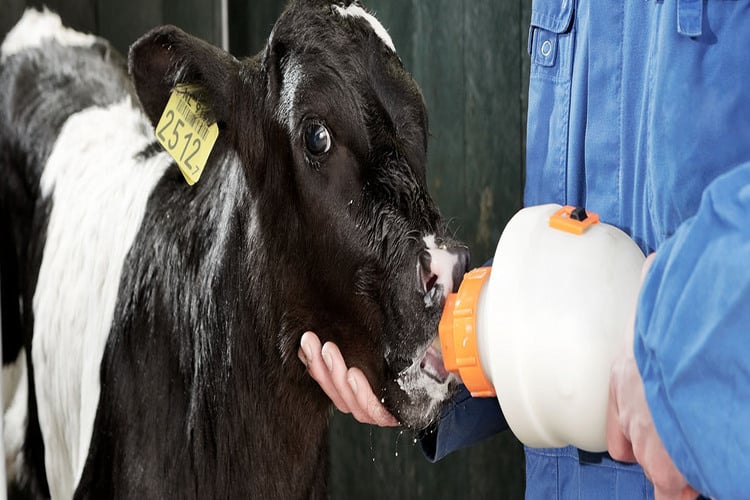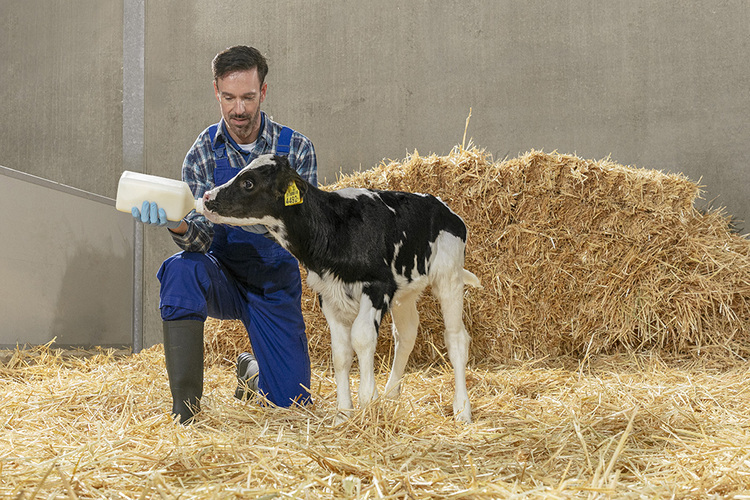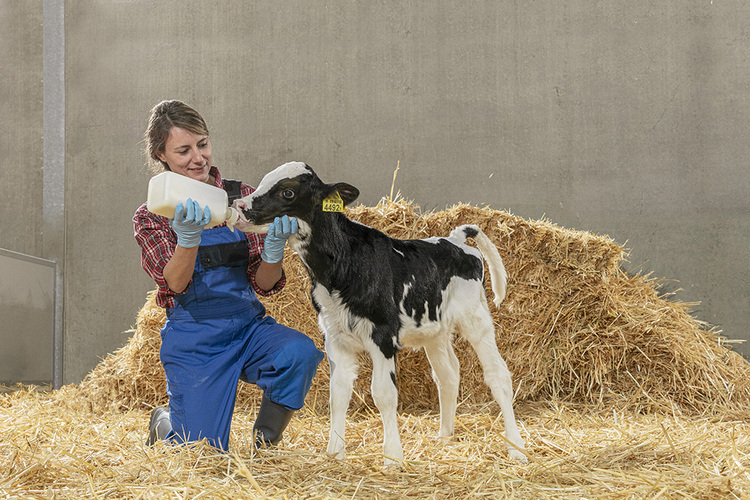- NutriOpt
- Colostrum Management
Key takeaways
-
Measuring colostrum quality is an essential first step of proper colostrum management
-
Only 65% of colostrum was of good quality with a Brix value of at least 22%
-
Antibody levels of heifer colostrum were as high as levels of older cows
-
Cows yielding high amounts of colostrum did not have lower antibody levels than cows with lower yields
-
Only if cows are milked more than 5 hours after calving, do antibody levels show a significant decline

Only 65% of colostrum samples tested in a Dutch study were of good quality
The first important step to achieve successful maternal antibody transfer to calves is to ensure that the quality of colostrum fed to a calf is sufficient. Calves need to receive 100 to 200 g of IgG[1] to ensure they reach a serum IgG level of ≥ 10 g/L, which is considered to be the dairy industry standard. If calves are fed at least 3-4 litres of good quality colostrum within 6 hours after birth, the IgG concentration in cow colostrum should therefore be at least 50 g/L[2,3,4]
The Brix value of a colostrum sample can be measured under practical conditions, making it a valuable tool to measure the quality of colostrum[5]. The objective of this study was to evaluate the quality of colostrum on Dutch dairy farms.
Study design
A total of 259 colostrum samples were collected on 11 commercial dairy farms. Brix value, collection time after calving, total colostrum volume and parity were recorded. A Brix value of ≥ 22% was considered to be indicative of good quality, a value below 18% was indicative of poor quality. A value between 18% and 21% was considered to be indicative of moderate quality.
Results
Percentage of colostrum samples with adequate quality
Brix values of the 259 samples are presented in graph 1
Graph 1, Brix values of 259 colostrum samples from 11 Dutch farms.
Of the 259 colostrum samples tested , only 65% was of good quality, 18% moderate and 17% was of poor quality.


Colostrum quality of heifers
There were no differences in Brix values between heifers and cows with a higher parity (see graph 2).
Graph 2, average Brix value by parity of samples tested from cows with parity 1-6 (blue bars). The green bars represent the percentage of samples from animals with a certain parity, expressed as percentage of the total number of 194 samples included in the analysis.
Colostrum quality in relation to volume of the first milking
The volume of colostrum of first milking was not a good indicator for colostrum quality. Milking up to 8 litres did not significantly lower the quality of colostrum collected (see Graph 3).
Graph 3, average Brix value in relation to the volume of the first milking (blue bars). The green bars represent the percentage of samples with a certain volume, expressed as percentage of the total number of 253 samples included in the analysis.


Colostrum quality in relation to the time between calving and first milking
Although the quality of the colostrum declined in time, milking the dam up to 4-5 hours after calving has a limited impact. Only after 6 hours the Brix levels go down (see Graph 4).
Graph 4, average Brix value in relation to the time elapsed between calving and first milking (blue bars). The green bars represent the percentage of samples obtained within a certain timeframe, expressed as a percentage of the total number of 127 samples included in the analysis.
Conclusion
In this study, only 65% of the samples were of good quality. Bartier[6] found similar results in Canada (see Graph 5) and these results are also in line with the results of a US study on 827 samples from 67 herds, which showed that almost 30% of colostrum samples had an IgG concentration below 50 g/L[7]. It is therefore crucial that farmers measure, as a first important element of colostrum management, the number of colostral antibodies before they feed it to their calves.
Graph 5, Brix values in colostrum of 569 cows
In contrast with common belief, there were no differences in Brix values between heifers and cows with higher parity, nor was there any effect of dilution in cows yielding higher amounts of colostrum during the first milking. There was an effect of time elapsed between calving and first milking, but within the first 4-5 hours after calving, these differences were not big.
References
[1] McGuirk, S. M., and M. Collins. 2004. Managing the production, storage and delivery of colostrum. Vet. Clin. North Am. Food Anim. Pract. 20:593–603.
[2] Chigerwe, M., and J. V. Hagey. 2014. Refractometer assessment of colostral and serum IgG and milk total solids concentrations in dairy cattle. BMC Vet. Res. 10:178.
[3] Chigerwe, M., J. W. Tyler, J. R. Middleton, J. N. Spain, J. S. Dill, and B. J. Steevens. 2008. Comparison of four methods to assess colostral IgG concentration in dairy cows. J. Am. Vet. Med. Assoc. 233:761–766.
[4] Godden, S. 2008. Colostrum management for dairy calves. Vet. Clin. North Am. Food Anim. Pract. 24:19–39.
[5] Buczinski, S, and J. M. Vandeweerd. 2016. Diagnostic accuracy of refractometry for assessing bovine colostrum quality: A systematic review and meta-analysis. J. Dairy Sci. 99:7381–7394.
[6] Bartier , A.L, Windeyer, M.C. and L. Doepel. Evaluation of on-farm tools for colostrum quality measurement. J. Dairy Sci. 98:1878–1884.
[7] Morrill, K. M., E. Conrad, A. Lago, J. Campbell, J. Quigley, and H. Tyler. 2012. Nationwide evaluation of quality and composition of colostrum on dairy farms in the United States. J. Dairy Sci. 95:3997–4005.



